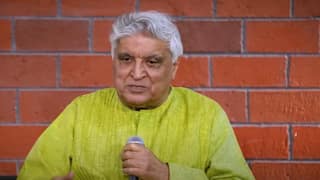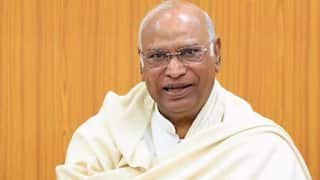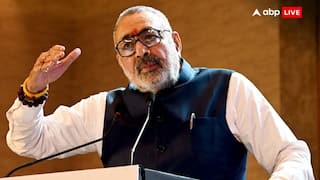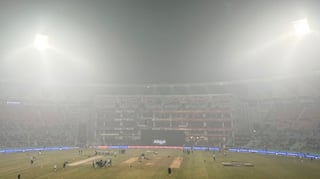First Solar Eclipse Of 2023 On April 20, Will Be 'Hybrid'. All About The One-In-10-Years Eclipse
Solar Eclipse 2023: The first solar eclipse of the year will be special for many reasons. Firstly, it will be 'hybrid', which means that it will be a combination of two types of solar eclipses.

Solar Eclipse 2023: The first solar eclipse of 2023 falls on April 20. It will sweep through Australia and Southeast Asia. While the solar eclipse will not be visible in India, people in the country can watch the spectacle online. The eclipse will be a rare phenomenon.
It will be a special type of solar eclipse for many reasons. Firstly, it will be a hybrid solar eclipse, which means that it will be a combination of two types of solar eclipses.
The hybrid solar eclipse of April 20, 2023, has been named the Ningaloo Eclipse, after an aboriginal word. The solar eclipse is an extraordinary and rare astronomical event that represents a unique opportunity for Western Australia because on April 20, the Moon will cast its shadow over the tip of Australia in a 40-kilometre-wide-track. The path of totality will pass over one of the most beautiful regions on Earth — the UNESCO World Heritage-listed Ningaloo Coast, located on Western Australia's remote coast near Exmouth.
The length of the time during which the Moon covers the Sun completely during a solar eclipse is known as the totality phase.
Since the path of totality will pass over Ningaloo, the eclipse has been named as the Ningaloo Eclipse.
More about a hybrid solar eclipse
A hybrid solar eclipse is also known as an annular-total eclipse, because it can change from an annular to a total eclipse, or from a total to an annular eclipse, along the observer's path.
The reason behind this shift between annular and total is that Earth's surface is curved, because of which the Moon's shadow moves across the globe, according to NASA.
A total solar eclipse occurs when the new Moon comes between the Sun and Earth, and casts the darkest part of its shadow, called the umbra, on Earth.
The Moon entirely covers the Sun during a total solar eclipse, which is visible only in regions located in the path of the Moon's umbra.
Those outside the path of the Moon's umbra see a partial eclipse, with the Moon blocking only a part of the Sun.
An annular solar eclipse is one in which the edge of the Sun remains visible as a bright ring around the Moon.
In case of a partial solar eclipse, the Moon passes between the Sun and Earth, but the three celestial objects are not perfectly lined up, as a result of which only a part of the Sun appears to be covered, giving it a crescent shape.
People outside the area covered by the Moon's inner shadow during a total or annular eclipse can see a partial solar eclipse.
ALSO READ | Ancient Humans Used Hallucinogenic Drugs, Analysis Of 3,000-Year-Old Hair Strands From Spain Reveals
Interesting facts about the hybrid solar eclipse of 2023
The narrow path of totality will stretch from the Indian Ocean to the Pacific.
One-in-10-years eclipse
The curvature of the Earth increases the distance between the Moon and all observers at either end of the narrow path of totality. To those observers, the Moon will appear too small to cover the Sun completely. Therefore, the eclipse will appear to be annular to those observers. In other words, the Sun will appear to form a ring around the Moon.
Since some regions will witness a total solar eclipse while some will see an annular eclipse, the solar eclipse is hybrid, which is a slightly rare phenomenon.
The last hybrid solar eclipse occurred in November 2013, and the next one will occur in November 2031. This makes the solar eclipse a one-in-10-years eclipse.
The path of totality, at the point where it meets Australia, is 40 kilometres wide.
Countries that will witness the total phase of the eclipse
The countries that will witness the total phase of the solar eclipse are Australia, East Timor and Indonesia, according to timeanddate.com.
The path of totality will pass over a small peninsula called North West Cape, in Australia. North West Cape is located about 1,100 kilometres north of Perth.
The rest of Australia, and a big portion of Southeast Asia, will witness a partial solar eclipse.
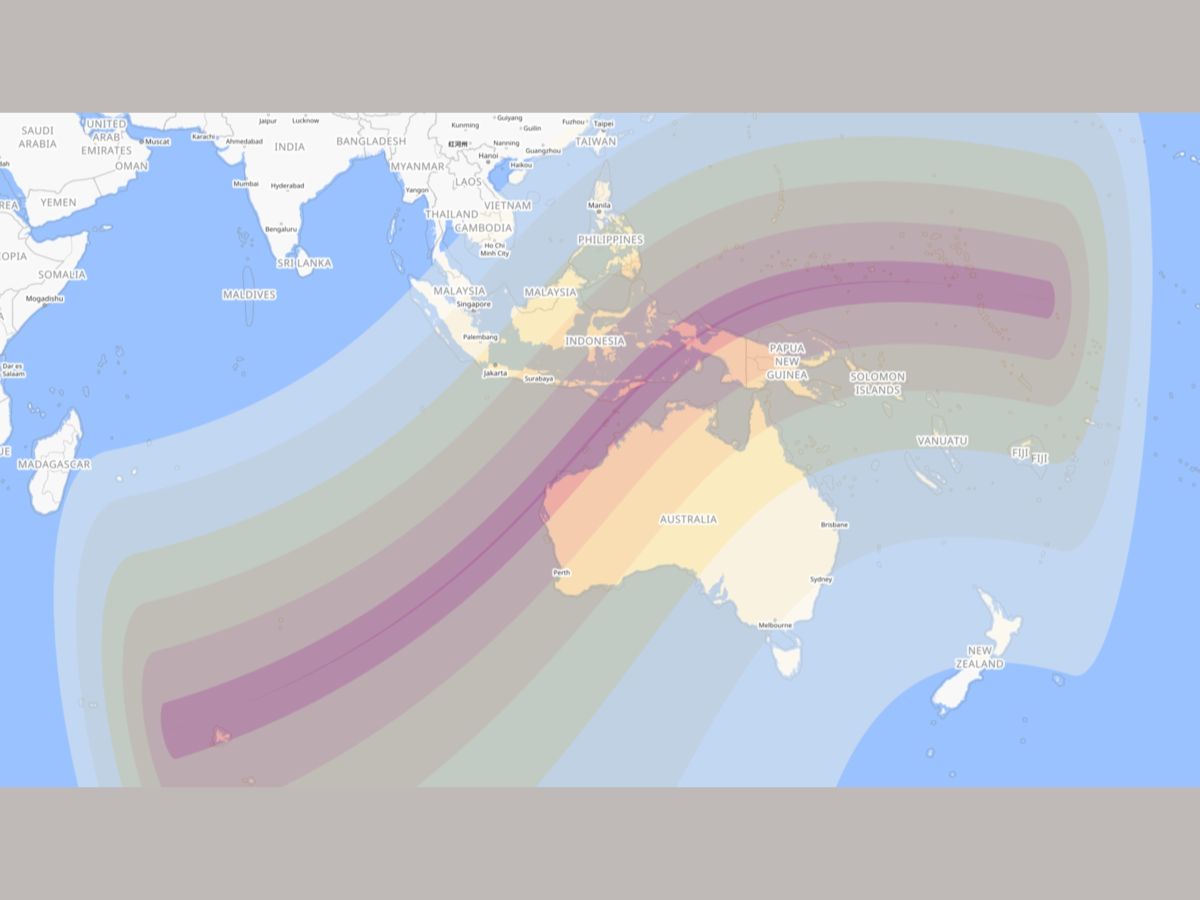
About 71 per cent of the Sun will appear to be covered by the Moon to observers in Perth.
To observers in Sydney, 10 per cent of the Sun will appear to be covered by the Moon, and in Singapore the figure will be 16 per cent.
Golden era of solar eclipses for Australia
According to timeanddate.com, the eclipse of April 20 will be a golden era of solar eclipses for Australia because this eclipse will be the first in a series of five consecutive total solar eclipses for the country in 15 years.
After April 20, 2023, the next total solar eclipses will be visible in Australia on July 22, 2028; November 25, 2030; July 13, 2037; and December 26, 2038.
Visitors will flock to North West Cape
The North West Cape is sparsely populated, and only about 3,000 people inhabit Exmouth, the largest town on the peninsula. However, on the day of the eclipse, thousands of visitors are expected to reach Exmouth to witness the event.
On April 20, Exmouth will have 58 seconds of totality.
Totality will pass over a solar observatory in Australia
The totality will pass over the Learmonth Solar Observatory located about 30 kilometres south of Exmouth.
New Moon to appear before the end of Ramadan
The holy month of Ramadan will end on April 21, 22 or 23, depending on the country, following the new Moon of April 20, which will cause the solar eclipse.
How to watch the solar eclipse online
People can watch the solar eclipse live on April 20, on the official YouTube channel of timeanddate.com. The event will be streamed live in collaboration with Perth Observatory.
One can also use a detailed eclipse path map to know where they fall on the map.
Timings for different phases of the eclipse
The partial phase of the eclipse will begin April 20 at around 7:04 pm IST. The total phase of the eclipse will start at around 8:07 pm IST.
The total phase will reach its maximum point, or the time at which the Moon's disk completely covers the Sun's bright face, at around 9:46 pm IST.
The total phase of the eclipse will end at around 11:26 pm IST on April 20, and the partial eclipse will end at around 12:29 am IST on April 21.



























